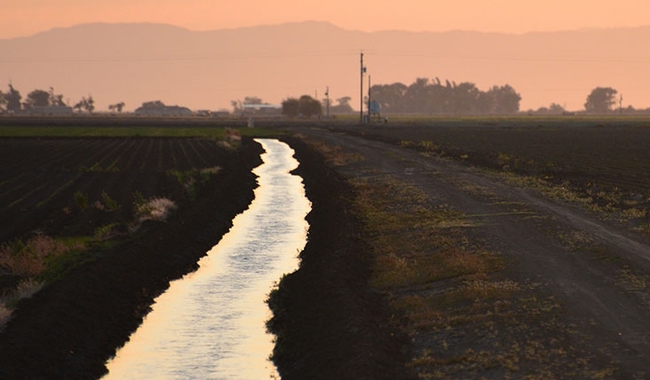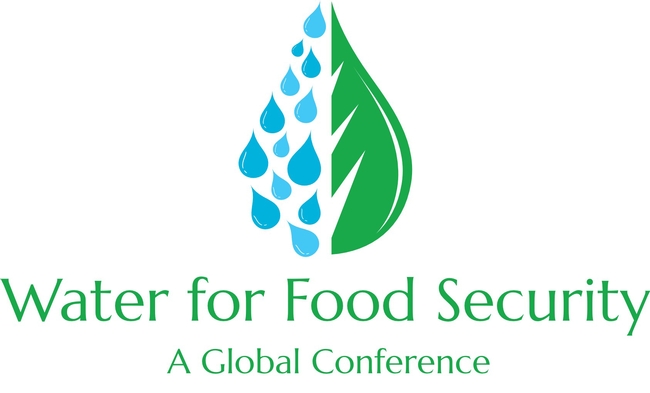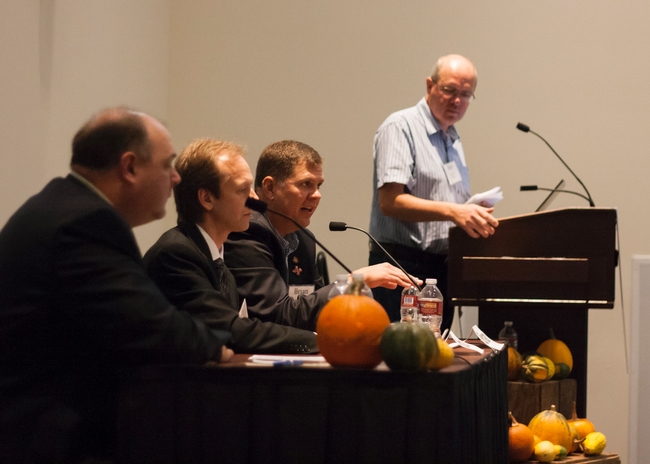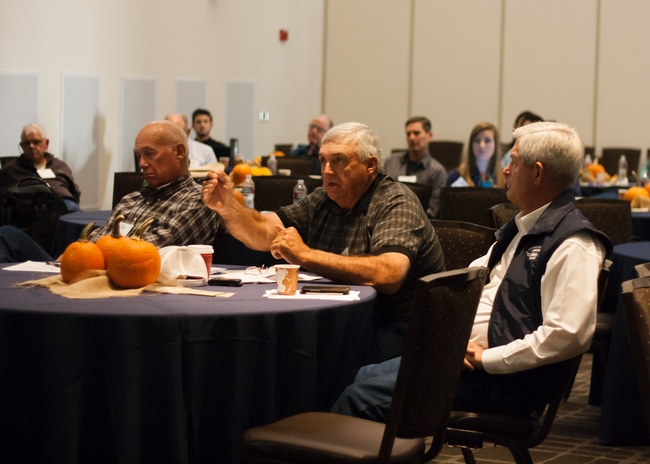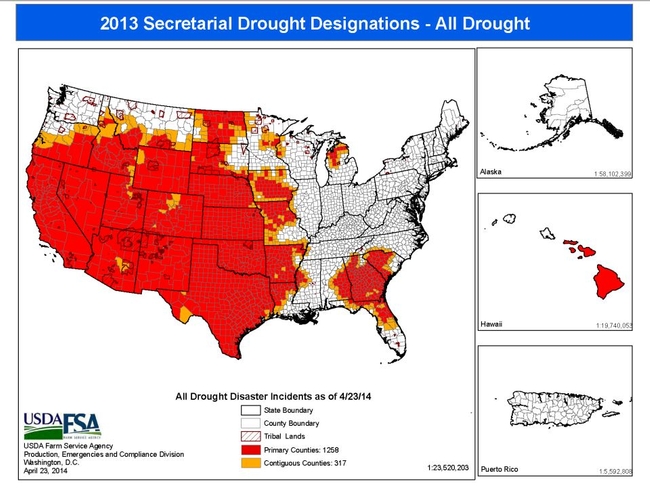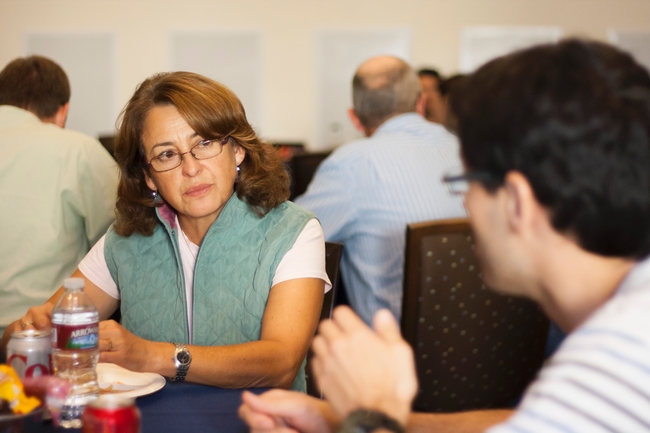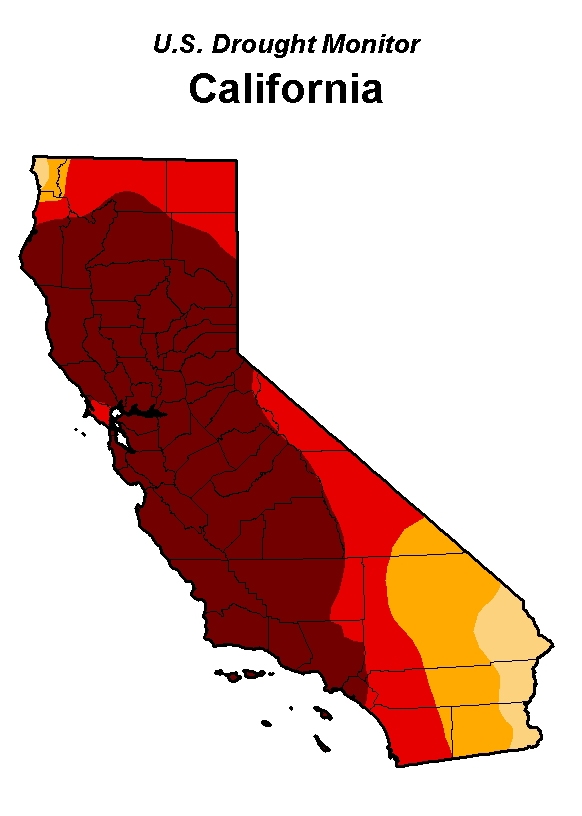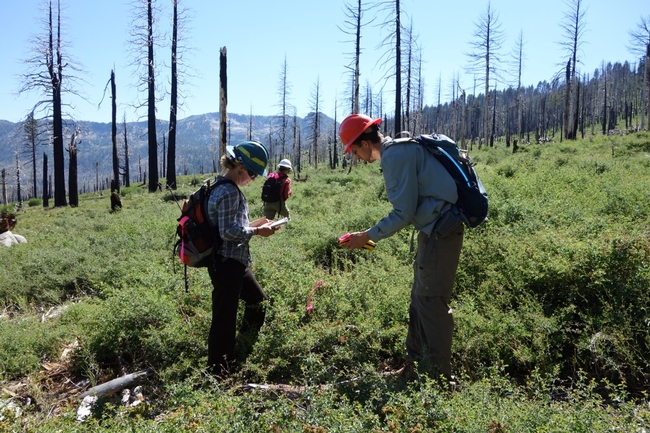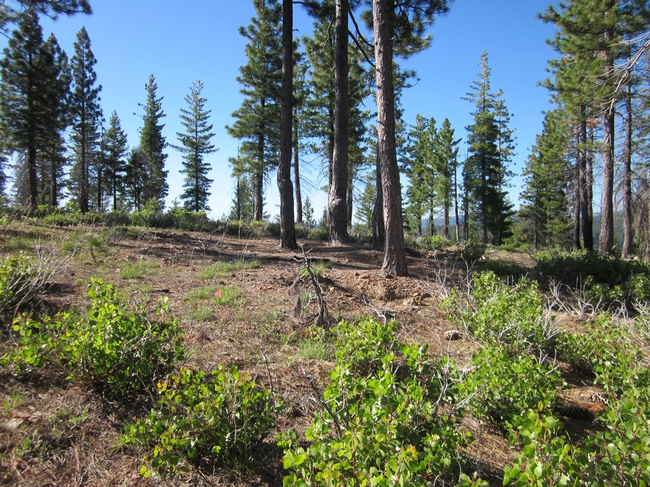Posts Tagged: California drought
International and California water conferences shine new light on lingering drought
The gauge reads 105 degrees in California's state capital as this article is being drafted. The four-year drought has baked itself into the landscape, with dead lawns crunching under feet and trees wilting under the heat, and has so far stolen a year's worth of precipitation. Deprived of moisture, the state has lost to wildfires three times the acreage of an average year. The once green valleys are now murky fishbowls of haze.
The total cost to the state, according to a new report released Tuesday by the Center for Watershed Sciences (CWS) at the University of California, Davis, is now $2.74 billion and 21,000 jobs.
Some see this as the new normal and new evidence ties it to climate change.
But despite the profound impact on the California agricultural economy, the state is actually doing well. And it's becoming the world's test kitchen for best practices in adapting agriculture to changing water supplies.
A legacy of progressive environmental regulations
“Despite the drought, we have a remarkably robust agricultural system,” says Jay Lund, director of CWS. “If you go back millennia and look at droughts, with a 30 percent loss of water you'd have a 30 percent loss of food production and you'd have 30 percent of the people starving.”
That hasn't happened today, he says, because California agriculture is more diversified than ever and its economy is connected to a world food market that advances despite the drought.
The many tools that UC Agriculture and Natural Resources (UC ANR) and others are deploying to help Californians better adapt today are also being translated into immediate lessons for the developing world.
Stockholm comes to Davis
Starting Sunday, representatives from more than 200 organizations will meet in Stockholm, Sweden, for the World Water Week mega conference. Under the theme Water for Development, they will refine the United Nations' broad Sustainable Development Goals to address the one billion people who would still be without safe drinking water and basic sanitation.
Many partners of UC ANR and the UC Davis World Food Center will be leading some of the numerous discussions, including: CGIAR, the World Bank, the Bill & Melinda Gates Foundation and the UN Food and Agriculture Organization.
A separate conference at UC Davis in October will then bring the focus to California and water for food. This global event, called Water Policy for Food Security, will draw on lessons from World Water Week through shared speakers like Chris Brown, the general manager of responsibility and sustainability at Olam International, and Claudia Ringler, a senior researcher at the International Food Policy Research Institute, which is co-hosting the event.
Presentations on the Case of California will open two days of panel discussions, ranging from how climate change will impact the cost of water in different regions of the world to how groundwater aquifers can be recharged and how new policies can bolster water markets.
The goal is to seize the momentum now building for an international effort towards #WaterSecurity. By drawing development investors, leading scientists, committed policy makers and global industry partners into one room within the world's number one ag school, the event will set a course of action in sustainably securing water for food and for people across the planet.
What's That Wet Stuff?
What's that wet stuff falling from California skies? Could it be the "R" word, rain? Or what Wikipedia calls "liquid water in the form of...
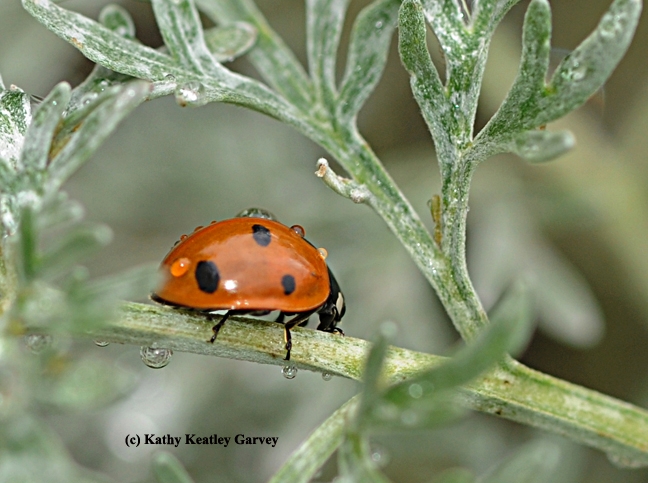
Rain drops falling on a lady beetle, aka ladybug. (Photo by Kathy Keatley Garvey)
Drought talk draws ranchers, researchers and climatologists
California's severe drought is entering a fourth year. With that, scientists met with ranchers to give background and gain feedback on a key climate indicator: the U.S. Drought Monitor.
The November 7 workshop held at the University of California, Davis, and webcast to 15 satellite locations across the state posed questions to a panel of experts who help publish the weekly analysis. UC Davis researchers also discussed new findings from in-depth rancher interviews along with strategies for maintaining the nutrition of cattle during the water shortage.
Read the full article at the UC Davis Department of Plant Sciences.
“We learn a lot when times are tough,” said Rick Roberti, a cattle and hay rancher who attended the workshop. “We're never going to have the water we need. So we might as well learn now how to deal with it.”
In 2012, the second year of California's drought, more than 2,500 of the nation's 3,000 counties qualified for disaster loans, due to designations made through the Drought Monitor.
"You see the grass that we had then and the grass that we have now and it's nothing to compare to," says rancher Antonia Suenz of Marysville, California. "The climate is changing."
California state climatologist Mike Anderson showed that only 1924 saw less rain than this year, but 2014 has had far higher temperatures: “So not only are you dealing with lack of water, you're dealing with Mother Nature increasing the demand for what water you have.”
Listen to more of this conversation with Anderson at California Drought Watch.
Ranching and California's drought: A workshop & webcast
These concerns and more are being discussed at an upcoming meeting called “Ranching and California's Drought” a public workshop and webinar to be held on the UC Davis campus Nov. 7 and broadcast at local satellite locations throughout the state.
Drought experts from a range of organizations will open the dialogue with ranchers, to discuss the science and the policies of how drought is declared and mapped in California. UC Davis researcher Leslie Roche will present new insights from an extensive study, having surveyed and interviewed ranchers throughout the state. Other topics include new feeding strategies, how ranchers can qualify for drought relief assistance and a seasonal forecast from the state climatologist. The workshop will be a learning opportunity for researchers as well.
“There are impacts of drought on a ranch that these models are blind to or just can't integrate,” says UC Davis Cooperative Extension specialist Ken Tate, one of the meeting organizers. “But these things need to be integrated into policy.”
As an example, he explains how late April showers in northern California gave this year's totals a deceptively positive review: “It may not look like that big of a drought on the annual forage production basis, when in reality it was horrendous in December and January,” he says. “April rain and forage were too late to save the day.”
The forum will allow Drought Monitor experts to better integrate local knowledge into their analysis and decision making, Tate says, adding: “They're really open and really interested in having these conversations.”
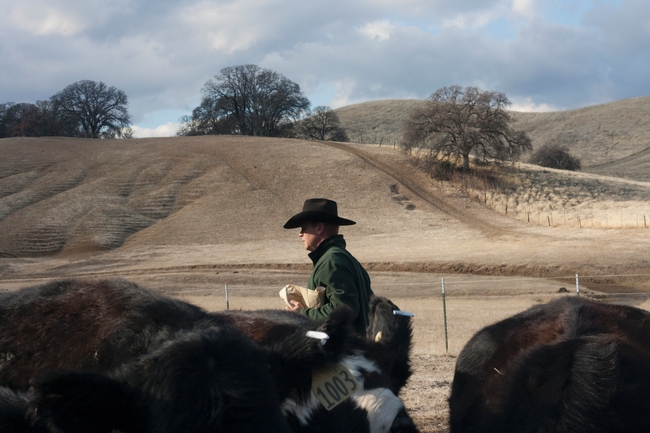
Connecting wildfires to climate change and drought
Longer summers, less moisture and warmer climates are predicted for California's Sierra Nevada mountains. These changing patterns bring frequent droughts and extended wildfire seasons — as seen from the current extreme drought. The question no longer is whether wildfires will be more common or more intense — they already are — but how forest managers want these fires to burn.
Jens Stevens, a postdoctoral researcher in disturbance ecology at the University of California, Davis, has tracked how forests thinned for wildfire react to high-intensity burns. The answers he found touch on growing concerns over how the state can protect its forests.
Under the context of climate change, Stevens studies how understory plants recover from wildfires, measuring the effects fuel treatments — such as the thinning of small trees — have on the way these forests burn.
Historically Sierra forests had gaps and openings, which prevented the spread of fires. More than a century ago land management agencies began a campaign of extinguishing all wildfires. Today's forest floors are blanketed with litter — fallen branches, leaves and shrubs — and many of the fire-tolerant pines have been replaced by firs, which handle shade well but act as fuel sources.
Stevens' research showed fuel treatments encourage resilience to wildfires, giving forests a greater ability to withstand a burn. Under really hot, dry summer conditions this makes a powerful difference.
“If you get warmer temperatures you're going to dry out the fuels,” says Stevens. “If we want to retain forest-dominated landscapes, we don't have the choice of doing nothing, because eventually these stands are going to burn."
To preserve forests, Stevens looked to native plant diversity under each management strategy. After a high severity fire, the tree canopy is non-existent. This new high-light environment favors other species, such as shrubs and flowering plants, which crowd out young trees.
In treating a stand before a fire, land managers are already encouraging plant diversity and when the stand burns, diversity increases even more, Stevens discovered.
While the treatments do protect the forest and encourage plant diversity, they are expensive and lead to uncertainty over how sensitive wildlife species are affected. Yet these areas will burn eventually, Stevens argues. The choice is either a more open forest or no forest at all.
He points out research by UC Davis ecologist Malcolm North, which shows the current pace of treatments can't keep up with the extent of Sierra forests that have been fire suppressed. The US Forest Service can treat up to 40 percent of a forest before managers must start over for follow-up treatments. The other 60 percent doesn't get touched.
“So the only real way to address that is to let the fire do the work for you,” says Stevens.
The proposal North and his colleagues arrived at relies on “firesheds.” These fire-prone areas would have boundaries that allow officials to efficiently manage the fires. If a burn begins after a treatment, they don't put it out. Allowing the fire to burn fuels they would otherwise be removing frees up resources to treat other areas.
“So if it's going to burn,” says Stevens, “you need to figure out ways the fire's going to give you your desired outcome.”
Watch Stevens explain more in his seminar.
This post was adapted from a longer piece by the UC Davis Department of Plant Sciences.


